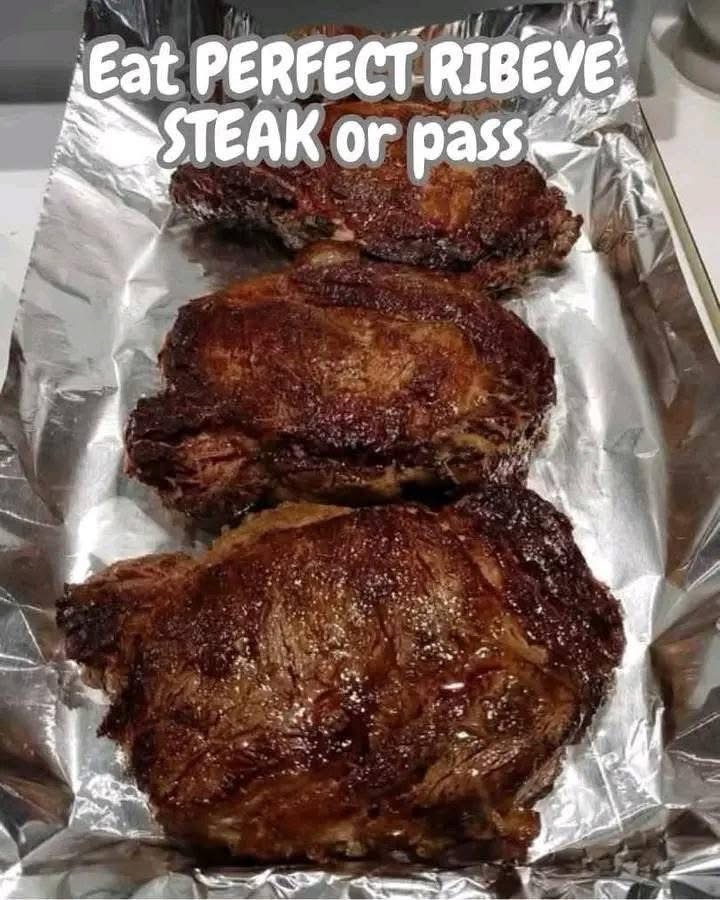
Few things in the world of food compare to the experience of a perfectly cooked ribeye steak. Known for its rich marbling, buttery texture, and deep beefy flavor, ribeye is a cut that shines whether grilled, pan-seared, or finished in the oven. With the right technique, you can achieve steakhouse-quality results right at home.
Why Ribeye?
Ribeye comes from the rib section of the cow, where the meat is naturally tender and well-marbled with fat. That fat melts during cooking, basting the steak from within and giving it its signature juicy, melt-in-your-mouth quality. It’s a favorite for steak lovers because it balances tenderness with bold, beefy flavor.
Ingredients
2 ribeye steaks (about 1 to 1 ½ inches thick, bone-in or boneless) 2 tbsp olive oil (or melted butter) 2 tsp kosher salt 1 tsp freshly cracked black pepper 3–4 garlic cloves, smashed 2–3 sprigs fresh thyme or rosemary 2 tbsp unsalted butter (for basting)
Instructions
1. Bring Steak to Room Temperature
Remove the ribeye from the refrigerator at least 30 minutes before cooking. This ensures even cooking and helps the steak sear properly.
2. Season Generously
Pat the steak dry with paper towels. Rub both sides with olive oil, then season liberally with salt and pepper. Don’t be shy—ribeye loves bold seasoning.
3. Heat Your Pan or Grill
For stovetop cooking, use a heavy cast-iron skillet. Heat it over medium-high until very hot. If grilling, preheat your grill to high heat (around 450–500°F).
4. Sear the Steak
Place the ribeye in the hot skillet or on the grill. Sear for 3–4 minutes per side without moving it, to develop a golden-brown crust.
5. Add Flavor
During the last 2 minutes of cooking, add butter, smashed garlic, and fresh herbs to the pan. Tilt the skillet slightly and spoon the melted butter over the steak for extra flavor and juiciness.
6. Check Doneness
Use a meat thermometer for accuracy:
Rare: 120–125°F Medium-rare: 130–135°F Medium: 140–145°F Medium-well: 150°F
Remember, the steak will continue to cook slightly after removing from heat (carryover cooking).
7. Rest Before Serving
Transfer the ribeye to a cutting board and let it rest for 5–10 minutes. This allows the juices to redistribute, keeping the meat tender.
Serving Suggestions
A perfect ribeye deserves simple yet delicious sides. Pair it with:
Garlic mashed potatoes or baked potatoes Grilled asparagus or roasted Brussels sprouts A fresh green salad with vinaigrette A glass of bold red wine like Cabernet Sauvignon or Malbec
Tips for the Best Ribeye
Choose quality meat: Look for USDA Prime or Choice ribeye with lots of marbling. Bone-in vs. boneless: Bone-in ribeye tends to have more flavor, while boneless is easier to cook evenly. Don’t overcrowd the pan: Cook one steak at a time if your skillet is small. Resting is key: Cutting too soon will make the juices run out.
Final Thoughts
Cooking the perfect ribeye steak is about simplicity, technique, and patience. With its rich marbling and unbeatable flavor, this cut doesn’t need fancy marinades or sauces—just good seasoning, a hot pan, and a little butter love. Master this recipe, and you’ll have steakhouse-quality meals at home anytime you crave them.
